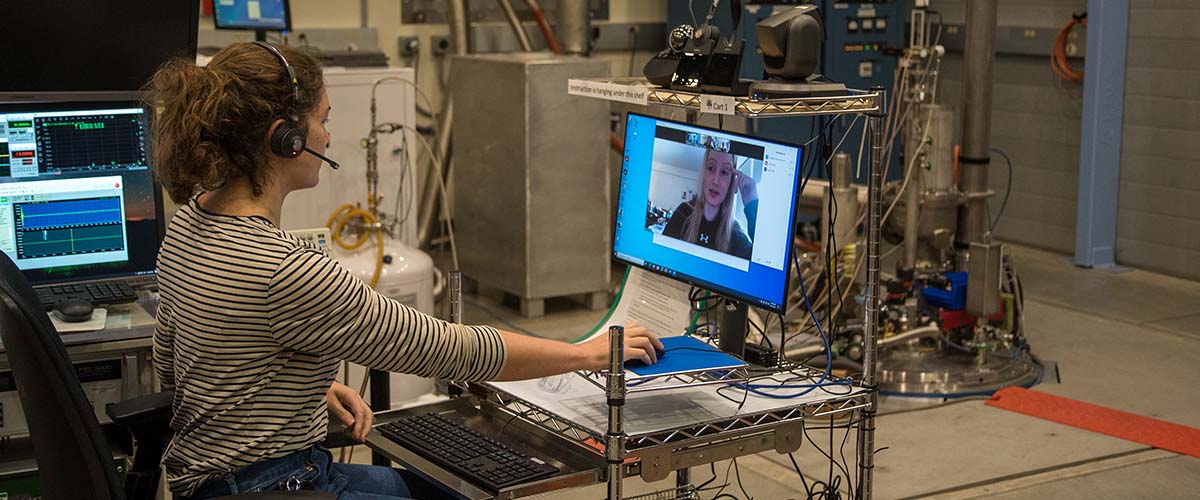
Stephen Bilenky
What's it like to be a remote user at the National MagLab? Learn from this frequent MagLab user who performed experiments on the 32T from across the country.
Ingrid Stolt was a graduate student when she was a MagLab user in spring 2021, but has since earned her PhD in physics from Northwestern University. At that time, on-site users were restricted as a COVID-19 precaution and, while it was not her first time using the MagLab's powerful magnets, it was her first time using them remotely from nearly 1,000 miles away. Hear what she was studying and what it is like to be a remote user compared to coming to the lab in person in this short Q&A.
What material were you studying at the MagLab?
A copper-oxide-based (cuprate) superconductor, HgBa2CuO4+x single crystal.
Why are high magnetic fields important for this research?
The cuprate superconductors have a mixed state in which the magnetic field penetrates the superconducting bulk in fixed areas known as vortices. The goal of my project was to study these vortices. By changing a magnetic field, we can manipulate the density of vortices in the material. At high magnetic fields like those at the MagLab, we can get a high enough density of the vortices to increase the resolution of our measured spectra and better understand how vortices contribute to the material's properties.
How would you compare being an in-person, on-site user with being a remote user?
Previously, as an on-site user, I have been responsible for more hands-on work, like setting up the experiment. I also had a better idea of what was happening around me and could physically control nearly everything.
On the other hand, being a remote user had its perks! I could just wake up in the morning and start working right away from the comfort of my home (or even from "the beach" as Dr. Arneil Reyes liked to remind me). The MagLab faculty who worked with me were very quick to respond whenever one of us noticed a problem with the system, so I still felt like I had very good control of my experiment, even though I was running it from Illinois.
What's the coolest thing about the MagLab?
The magnets and the tiny CNC (computer numerical control) machine.
Did you always want to be a scientist? Or If you were not a scientist, what would you be?
No, I did not have a plan for my life growing up and I still don't have much of one now. If I were not a scientist I would probably have been a writer or a personal trainer. If I could go into a different field of science, I would want to try neuroscience because the brain is insanely cool.
More than 1,400 scientists come from across the world to use our unique magnets. If you have an experiment you would like to do here, find out how to request magnet time. Magnet time is free.
Last modified on 02 December 2022